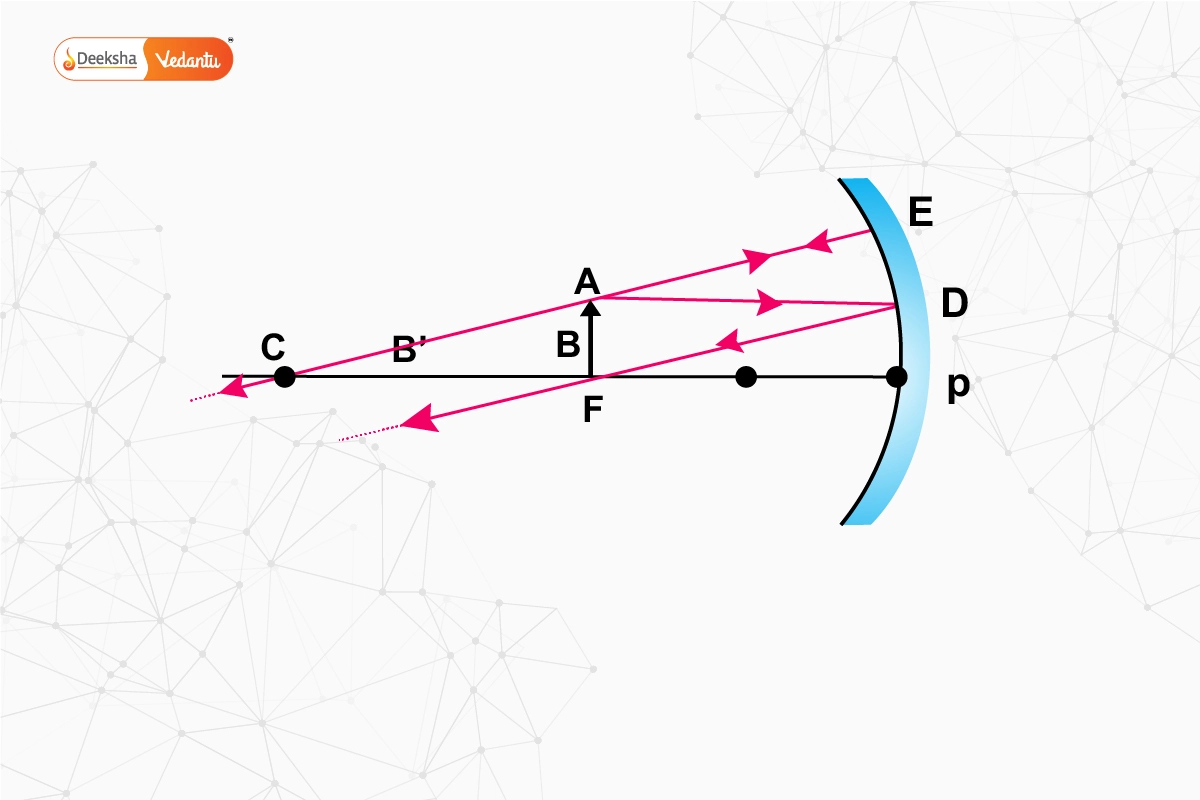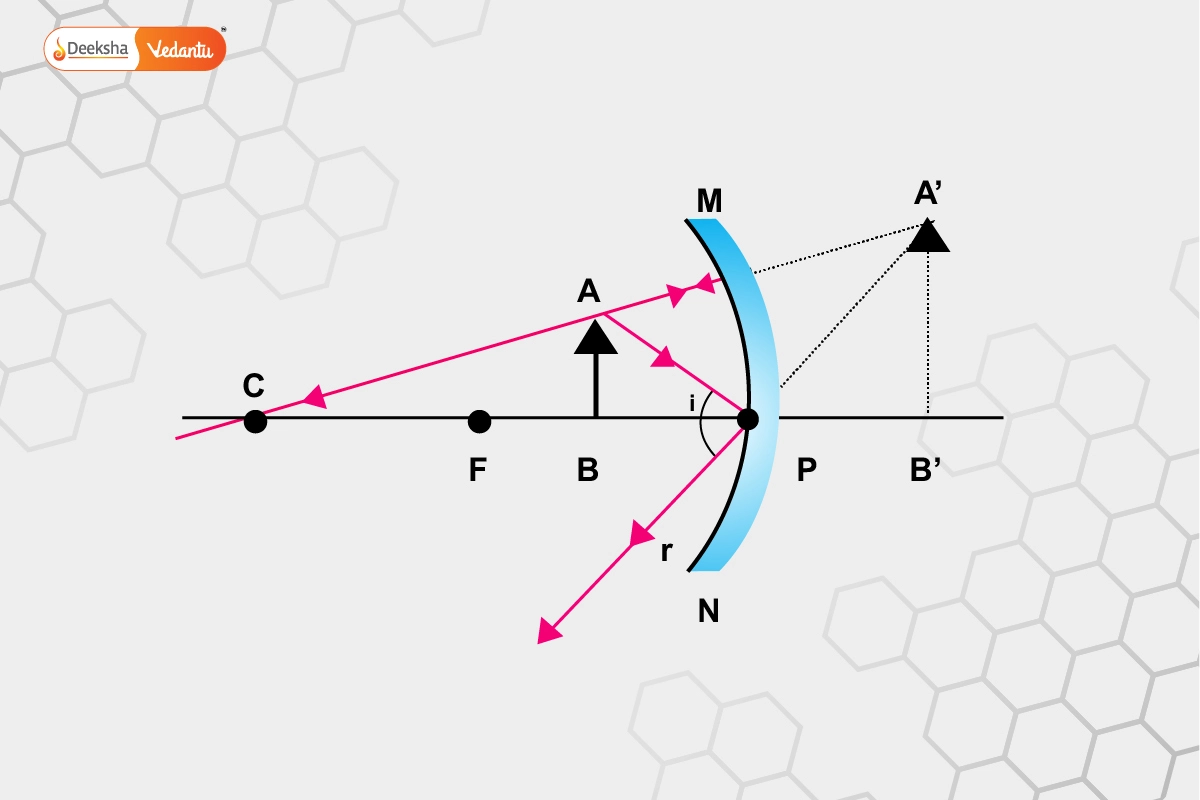A mirror reflects most of the light that falls on it. There are two types: flat ones called plane mirrors, and curved ones called spherical mirrors. This article focuses on two types of spherical mirrors: convex and concave. It also explains ray diagrams, which help us understand how light behaves with these mirrors. By looking at these diagrams, we can learn about reflection and image formation.
A Mirror
A mirror reflects light, creating images. When something is in front of a mirror, we see its reflection. Light from the object reflects off the mirror, forming an image. There are two types of images: real and virtual. Real images occur when light rays come together, while virtual ones seem to come from a point where they don’t actually meet.
Ray diagrams help us understand how light creates images in mirrors. Lines with arrows represent light rays, showing their paths and interactions with the mirror. By studying these diagrams, we can learn how images form and how our eyes see objects through reflection.

Concave Mirror Characteristics:
- Shape and Reflecting Surface: Concave mirrors have a curved surface that curves inward, resembling the inner surface of a hollow sphere.
- Converging Properties: Light rays reflected from concave mirrors converge or come together at a focal point.
- Image Formation: Depending on the object’s position, concave mirrors can form both real and virtual images.
- Magnification: When close to the object, concave mirrors create magnified, erect, and virtual images.
- Changing Distance and Image: As the object moves farther from the mirror, the image size decreases and transitions from virtual to real, forming an inverted image.
- Versatile Applications: Concave mirrors find use in telescopes, shaving mirrors, and headlights due to their ability to create images of varying sizes and types.
Convex Mirror Characteristics:
- Shape and Reflecting Surface: Convex mirrors have a curved surface that curves outward, resembling the outer surface of a sphere.
- Diverging Properties: Light rays reflected from convex mirrors diverge or spread out.
- Image Formation: Convex mirrors always produce virtual, erect, and diminished images, regardless of the object’s position.
- Wide Field of View: Due to their outwardly curved shape, convex mirrors offer a wider field of view compared to other mirrors, making them suitable for use in parking lots and surveillance systems.
- Image Distance and Size: Virtual images formed by convex mirrors are always closer and smaller than the object, allowing for a broader reflection of the scene.
Image Formation by Concave Mirror:
Object at Infinity:
A real and inverted image forms at the focus, significantly smaller than the object.

Object Beyond the Centre of Curvature:
When beyond the centre of curvature, a real image forms between the centre of curvature and the focus, smaller than the object.

Object at the Centre of Curvature or Focus:
Placing the object at the centre of curvature or focus results in a real image at the centre of curvature, maintaining the object’s size.

Object Between the Centre of Curvature and Focus:
If between the centre of curvature and focus, a real image forms behind the centre of curvature, larger than the object.

Object at the Focus:
Positioning the object exactly at the focus creates a real image at infinity, larger than the object.

Object Between the Focus and the Pole:
Placing the object between the focus and the pole forms a virtual and erect image, larger than the object.

Image Formation by Convex Mirror:
Object at Infinity:
When the object is at infinity, a virtual image forms at the focus of the convex mirror. The image is significantly smaller than the object.

Object at a Finite Distance:
Placing the object at a finite distance from the mirror results in a virtual image between the pole and the focus. The image is smaller than the object.

In both scenarios, images formed by convex mirrors are always virtual and erect. Due to the mirror’s shape, light rays diverge upon reflection, creating smaller virtual images. Understanding these principles helps predict the characteristics of images formed by convex mirrors accurately.
FAQs
Convex mirrors are used in applications requiring a wide field of view, such as rear-view mirrors and security mirrors, due to their ability to provide a broad reflection of the scene.
Images formed by convex mirrors are always virtual, erect, and diminished, regardless of the object’s position relative to the mirror.
Convex mirrors form virtual images through reflection. Regardless of the object’s position relative to the mirror, convex mirrors always produce virtual, erect, and diminished images.
A convex mirror is a curved mirror with a reflecting surface that curves outward, resembling the outer surface of a sphere.
Concave mirrors are used in various applications, including telescopes, shaving mirrors, and headlights, due to their ability to focus light to a point.
Images formed by concave mirrors can be real or virtual, erect or inverted, and magnified or diminished, depending on the object’s position relative to the mirror.
Concave mirrors form images through reflection. Depending on the object’s position relative to the mirror, concave mirrors can produce both real and virtual images.
A concave mirror is a curved mirror with a reflecting surface that curves inward, resembling the inner surface of a hollow sphere.











Get Social